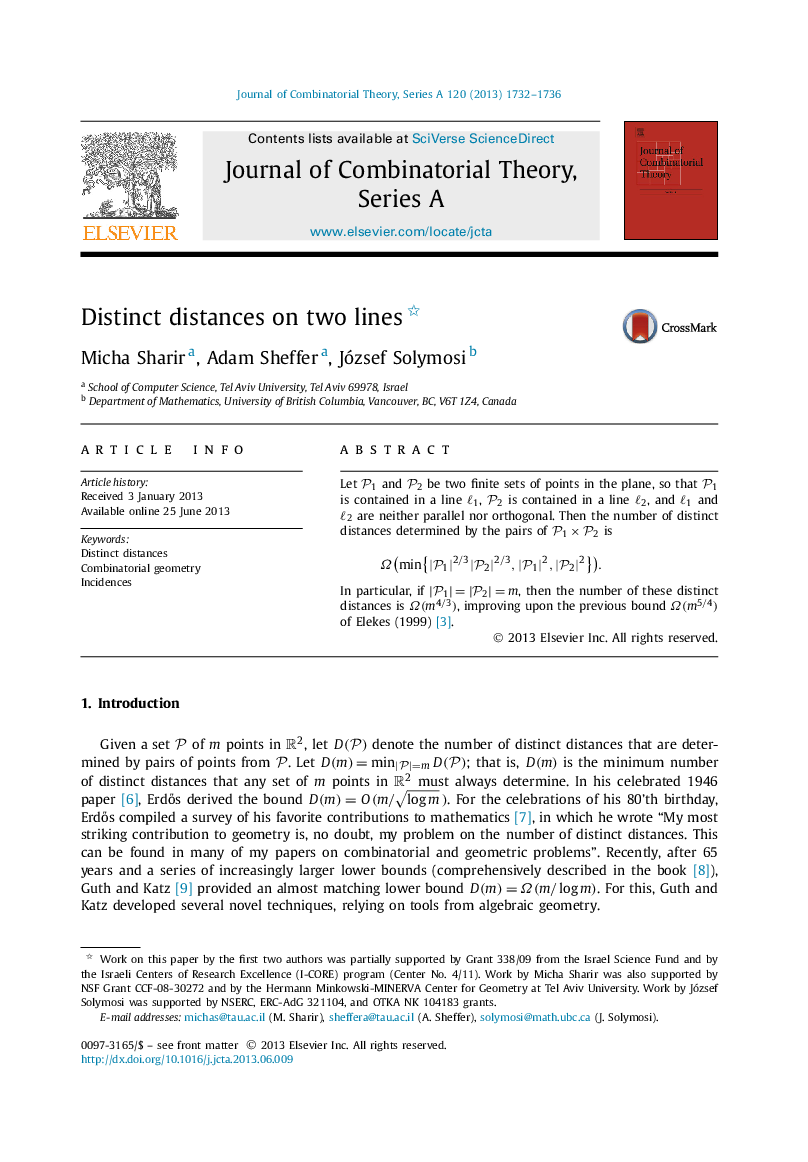| Article ID | Journal | Published Year | Pages | File Type |
|---|---|---|---|---|
| 4655436 | Journal of Combinatorial Theory, Series A | 2013 | 5 Pages |
Abstract
Let P1P1 and P2P2 be two finite sets of points in the plane, so that P1P1 is contained in a line ℓ1ℓ1, P2P2 is contained in a line ℓ2ℓ2, and ℓ1ℓ1 and ℓ2ℓ2 are neither parallel nor orthogonal. Then the number of distinct distances determined by the pairs of P1×P2P1×P2 isΩ(min{|P1|2/3|P2|2/3,|P1|2,|P2|2}).Ω(min{|P1|2/3|P2|2/3,|P1|2,|P2|2}). In particular, if |P1|=|P2|=m|P1|=|P2|=m, then the number of these distinct distances is Ω(m4/3)Ω(m4/3), improving upon the previous bound Ω(m5/4)Ω(m5/4) of Elekes (1999) [3].
Related Topics
Physical Sciences and Engineering
Mathematics
Discrete Mathematics and Combinatorics
Authors
Micha Sharir, Adam Sheffer, József Solymosi,
